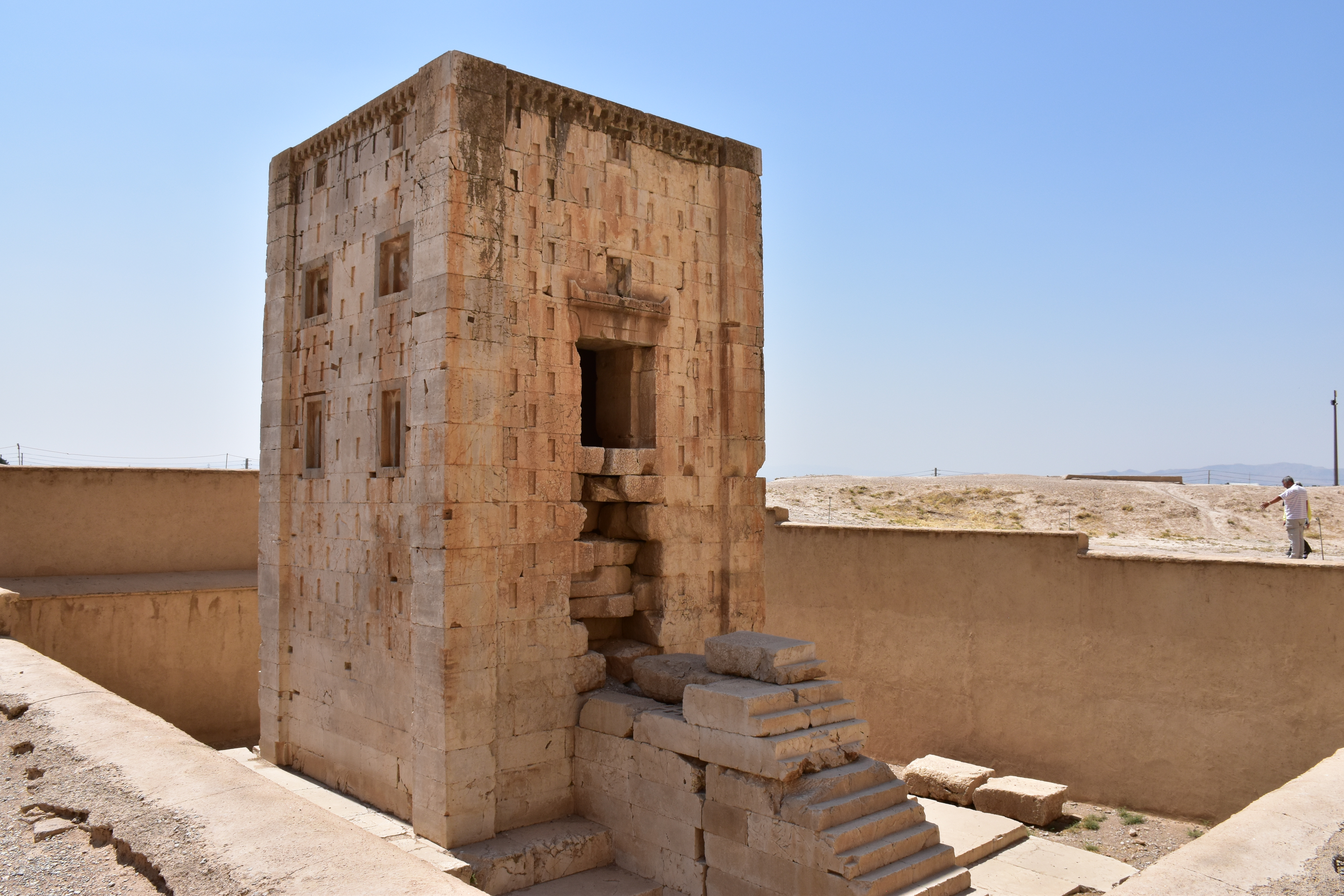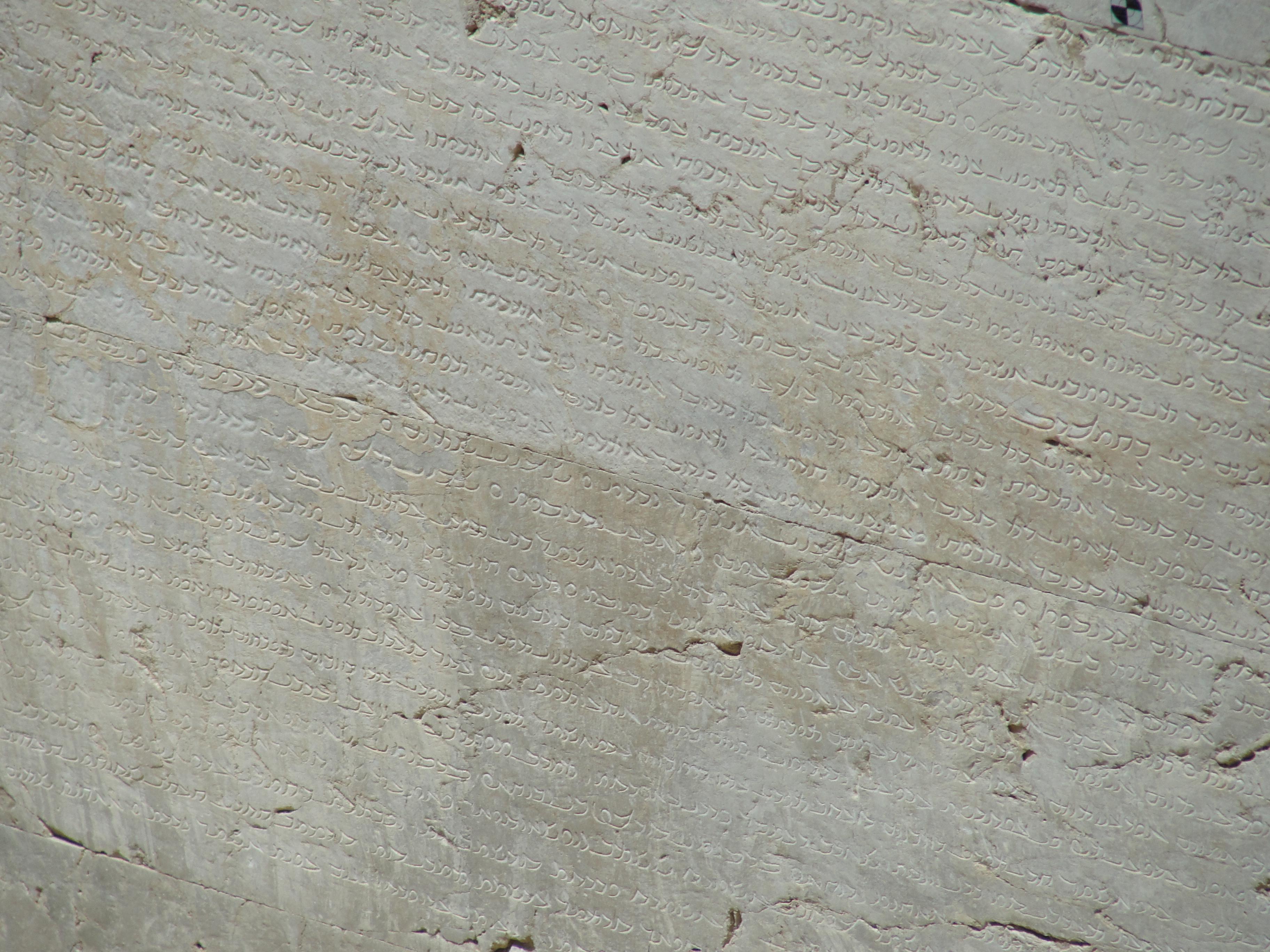Great Inscription of Shapur I
at Ka'ba-ye Zartosht

Shapur I (~240 - 270 CE) was the second king of the Sassanid Empire. He succeeded his father, Ardashir, who established the Sasanian dynasty after conquering the Parthians in 224 CE. Shapur increased the size of the empire and won great renown through a series of three campaigns against the Romans. In the first, he defeated the emperors Gordianus and Philip, who ceded Western Armenia in a "most shameful treaty." In the second, he invaded Mesopotamia and Syria, conquering thirty-six Roman cities. The third culminated in the capture of the Roman emperor Valerian and the conquest of Roman Syria, Cilicia, and Cappadocia. Shapur's campaigns (among his other deeds) are memorialized in the Great Inscription at Ka'ba-ye Zartosht.
The Ka'ba-ye Zartosht (The Ka'ba/Cube of Zoroaster) is an ancient structure at Naqsh-e Rostam in modern-day Iran. Naqsh-e Rostam served as the Achaemenid necropolis, and the Ka'ba faces the royal tomb of Darius II (carved directly into the cliffs opposite the building). Scholars have debated whether the building was a Zoroastrian fire temple, an archive, or an Achaemenid mausoleum. In any case, Shapur's inscription does not speak to the building's original function.
Shapur's inscription is trilingual--Parthian, Greek, and Middle Persian versions were discovered on the east, south, and west walls of the Ka'ba, respectively. A Middle Persian version of Kerdir's inscription was also discovered beneath Shapur's on the east wall. The inscription details Shapur's ancestry, territorial possessions, military exploits, and religious observances, concluding with a list of the royal courts of Pabag, Ardashir, and Shapur himself. Shapur's inscription has proven itself an invaluable scholarly resource in mapping the empire's growth, challenging Roman narratives of the Syrian campaigns, and understanding courtly and religious life under the early kingdom. Of his own legacy, Shapur writes, "these so numerous deeds were commanded to be written down for this reason: so that whoever comes after me will recognize the fame, bravery, and rulership that was mine" (31).
Shapur's inscription is trilingual--Parthian, Greek, and Middle Persian versions were discovered on the east, south, and west walls of the Ka'ba, respectively. A Middle Persian version of Kerdir's inscription was also discovered beneath Shapur's on the east wall. The inscription details Shapur's ancestry, territorial possessions, military exploits, and religious observances, concluding with a list of the royal courts of Pabag, Ardashir, and Shapur himself. Shapur's inscription has proven itself an invaluable scholarly resource in mapping the empire's growth, challenging Roman narratives of the Syrian campaigns, and understanding courtly and religious life under the early kingdom. Of his own legacy, Shapur writes, "these so numerous deeds were commanded to be written down for this reason: so that whoever comes after me will recognize the fame, bravery, and rulership that was mine" (31).

Bibliography
Shapur Shahbazi, “ŠĀPUR I: History, Encyclopædia Iranica, online edition, 2002, available at http://www.iranicaonline.org/articles/shapur-i.
“Ka'ba-ye Zartosht,” Encyclopædia Iranica, vol. XV, fasc. 3, pp. 271-272, available at https://iranicaonline.org/articles/kaba-ye-zardost.